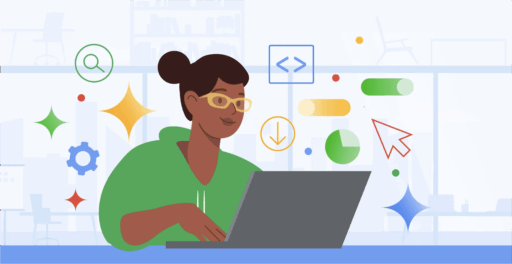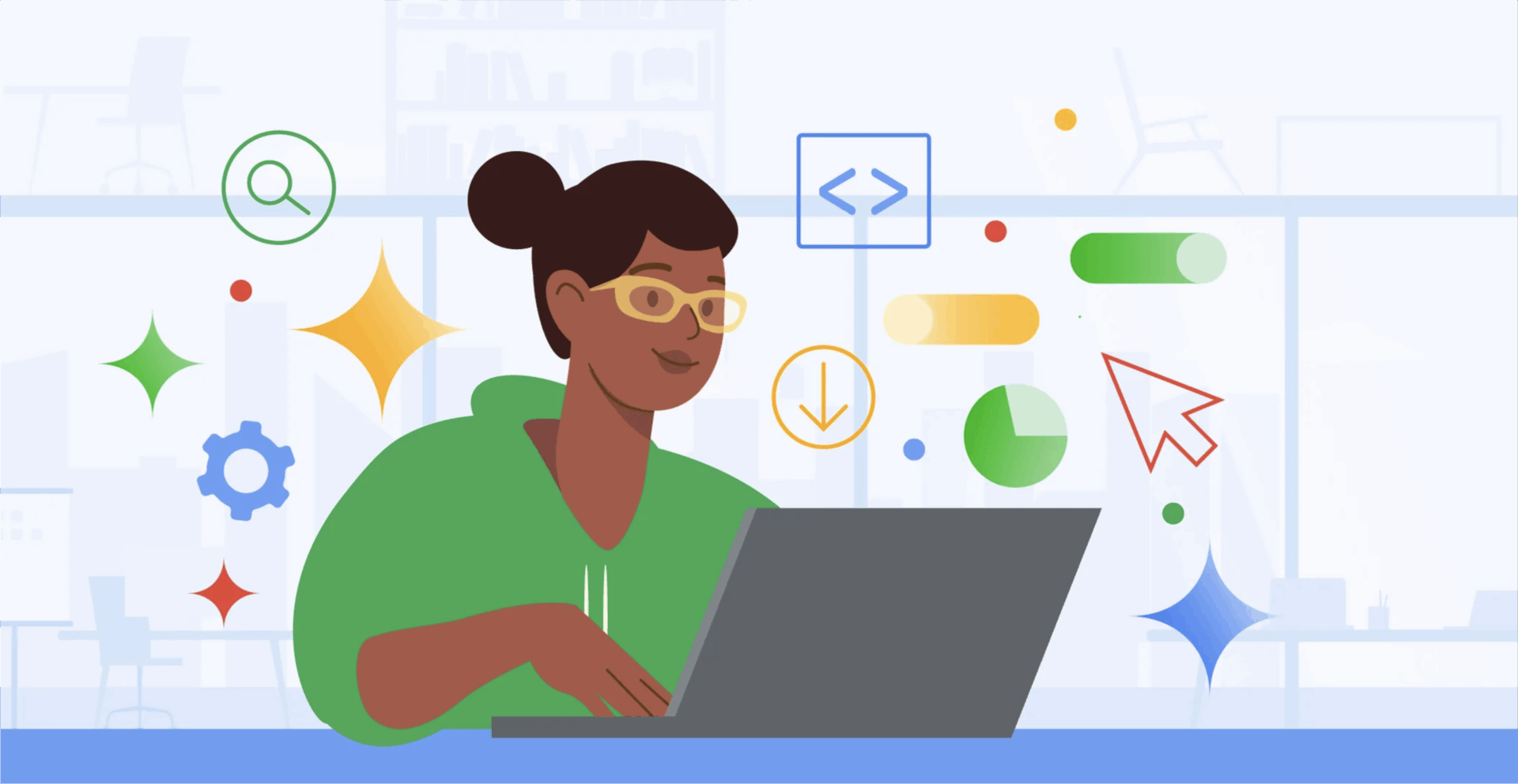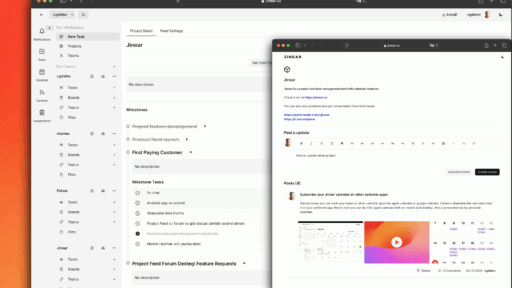The workplace revolution is here, and Google just showed us exactly how to win it. AI helps generate 30% of new code written at Google, which is then reviewed and approved by our engineers, while their teams experience an estimated 10% increase in engineering velocity. But here’s what most articles miss: Google’s success isn’t just about the tools—it’s about the systematic approach to integrating AI that any organization can replicate.
Bottom Line Up Front: Companies implementing AI strategically are seeing 20-30% productivity gains, 56% wage premiums for AI-skilled workers, and 4x faster revenue growth. The question isn’t whether to adopt AI, but how to do it right. This guide breaks down Google’s proven playbook and shows you exactly how to implement AI for maximum workplace efficiency.
Google’s AI Workplace Mastery: Real Results at Scale
Google isn’t just talking about AI transformation—they’re living it every day. Gemini in Workspace now provides business users with more than 2 billion AI assists every month, demonstrating enterprise-scale success that validates AI’s workplace potential. This builds on broader AI workplace trends I’ve explored in my comprehensive analysis of AI business transformation.
The Numbers That Matter
Google’s implementation delivers measurable results across every function. 12% of duplicate bugs are now automatically handled by an AI agent, freeing engineers to focus on critical issues. Their sales teams achieved a 78% year-over-year increase in completed RFPs through AI-powered automation.
The visual content creation process shows AI’s creative potential. At this year’s Google I/O, AI helped create 219 keynote slides. We used our Imagen model for 48% of the visuals and 80% of the videos used either Veo or Imagen models. This isn’t replacing creativity—it’s amplifying it, as I discuss in my broader design and innovation frameworks.
Trust and Safety operations demonstrate AI’s scalability. Our Trust & Safety teams use AI to help detect and flag content that may violate our policies. This saves our teams significant time — a critical advantage when our teams manually reviewed more than one billion pieces of content in 2024 alone.
The Strategic Framework That Works
Google’s approach follows three core principles that separate successful implementations from failed experiments:
Embedded Integration: Rather than standalone AI tools, Google weaves AI capabilities directly into existing workflows. During Google Meet calls, Gemini can transcribe conversations in real-time and generate summaries of key points and action items, with over 50 million attendees benefited from AI-powered meeting notes in Google Meet in June alone.
Human-AI Collaboration: Every AI implementation maintains human oversight and decision-making authority. Their recruiting process uses AI as part of our recruiting process to more effectively search our candidate pool and match skills and experiences to the right open roles, with a recruiter always leading the process.
Continuous Optimization: Google continuously refines AI applications for maximum impact. Their food service optimization shows unexpected applications: Our chefs use data from AI-driven insights to refine menus, preventatively reduce waste in our cafes and tailor solutions unique to each campus’ needs. In 2024, we reduced food waste per Googler by approximately 39% compared to 2019.
The 2025 AI Workplace Landscape: Massive Adoption, Bigger Opportunities
The data from 2025 reveals an unprecedented acceleration in workplace AI adoption. 71 percent of respondents say their organizations regularly use gen AI in at least one business function, up from 65 percent in early 2024, while 75% of people use AI at work, with 46% only started using it less than six months ago.
Productivity Gains That Actually Matter
Recent studies reveal AI’s true impact on workplace efficiency. The St. Louis Federal Reserve found that workers are 33% more productive in each hour that they use generative AI, translating to a 1.1% increase in aggregate productivity across the economy.
PwC’s global analysis shows even more dramatic results. Since GenAI’s proliferation in 2022, productivity growth has nearly quadrupled in industries most exposed to AI (e.g. financial services, software publishing), rising from 7% from 2018-2022 to 27% between 2018-2024.
The wage data contradicts fears about AI reducing worker value. Jobs which require AI skills offer a wage premium (over similar roles that don’t require AI skills) in every industry analysed, with the average premium hitting 56%, up from 25% last year.
The Skills Revolution Is Accelerating
Change is happening faster than most organizations realize. The skills sought by employers are changing 66% faster in occupations most exposed to AI, up from 25% last year. This creates both challenges and opportunities for forward-thinking organizations.
Job creation, not destruction, characterizes the current AI transformation. While occupations with lower exposure to AI saw strong job growth (65%) in recent years (2019-2024), growth remained robust even in more exposed occupations (38%).
Practical AI Implementation: From Strategy to Execution
Phase 1: Foundation Setting (Months 1-3)
Start with leadership alignment and infrastructure assessment. 79% of leaders agree their company needs to adopt AI to stay competitive, but 59% worry about quantifying the productivity gains of AI. Address this uncertainty by establishing clear success metrics before implementation, using the strategic frameworks I outline in my business transformation methodologies.
Action Steps:
- Conduct current state assessment of data infrastructure
- Identify 3-5 high-impact, low-risk pilot use cases
- Establish governance framework and training protocols
- Set baseline productivity measurements
Tool Selection Criteria: Choose platforms that integrate with existing workflows rather than requiring dramatic process changes. Microsoft Copilot works best for Office 365-heavy organizations, while ChatGPT Enterprise offers broader capabilities for diverse use cases.
Phase 2: Pilot Implementation (Months 4-8)
Focus on specific functions where AI can deliver immediate value. Organizations are most often using gen AI in marketing and sales, product and service development, service operations, and software engineering—areas with the highest ROI potential.
Customer Service Applications: By 2025, 85% of customer interactions are expected to be managed by AI, with 90% of issues resolved by chatbots. Start with FAQ automation and escalation routing before moving to complex issue resolution.
Content Creation and Marketing: 41.29% of marketers report higher revenue from AI-driven email marketing, while AI boosts lead generation by 50%, reduces call times by 60-70%, and cuts costs by 40-60%. These align with the content strategies I detail in my comprehensive marketing frameworks.
Software Development: 37% of jobs involving development and coding using AI for at least 25% of tasks, with measurable productivity gains across the development lifecycle.
Phase 3: Scale and Optimize (Months 9-18)
Expand successful pilots across the organization while maintaining quality and governance standards. Making “big leaps” (such as new business models) is only one source of game-changing AI value. The other is the cumulative result of incremental value at scale: 20% to 30% gains in productivity, speed to market and revenue.
Enterprise-wide Deployment: Follow Google’s model of embedded integration. Rather than standalone AI tools, incorporate AI capabilities into existing business processes and workflows.
Training and Adoption: AI power users aren’t doing it on their own—they receive ongoing training, both on universal tasks and uses more tailored to their role and function. Invest in comprehensive training programs that go beyond basic AI awareness, incorporating principles from my team development methodologies.
Industry-Specific Implementation Strategies
Healthcare: Efficiency Meets Compliance
Healthcare leads AI adoption despite regulatory complexity. Focus on administrative efficiency and decision support rather than direct patient care applications. Document generation, scheduling optimization, and clinical data analysis provide immediate value while maintaining compliance requirements.
Key Applications: Medical documentation automation, appointment scheduling optimization, clinical decision support, and administrative workflow automation.
Financial Services: Risk and Reward
Financial organizations achieve significant gains through AI-powered advisory services and operational efficiency. Focus on customer advisory enhancement, risk assessment automation, and regulatory compliance support.
Implementation Focus: Customer service automation, fraud detection, investment advisory support, and document processing automation.
Manufacturing: Operational Excellence
Manufacturing benefits from predictive maintenance and quality control applications. AI-driven insights optimize production schedules, reduce downtime, and improve product quality.
Strategic Applications: Predictive maintenance, quality control automation, supply chain optimization, and safety monitoring.
Professional Services: Knowledge Amplification
Professional services firms leverage AI for research, document generation, and client advisory services. Focus on augmenting rather than replacing professional expertise.
Value Drivers: Legal research automation, document drafting, client communication enhancement, and proposal generation.
My Personal AI Efficiency Strategies: Real-World Implementation
After implementing AI across multiple projects and organizations, here’s how I actually use AI to maximize workplace efficiency, building on the strategic approaches I share in my comprehensive business insights:
Content Strategy and Creation
I use Claude for strategic thinking and complex analysis, ChatGPT for rapid content generation, and specialized tools like Notion AI for project management integration. The key is matching tool capabilities to specific tasks rather than trying to use one tool for everything.
Daily Workflow: Morning strategy sessions with Claude for project planning, ChatGPT for rapid content drafts, and Midjourney for visual concepts. This combination reduces content creation time by 60% while improving quality and consistency.
Project Management and Analysis
AI transforms how I approach complex projects. Instead of spending hours on initial research and analysis, I use AI to rapidly synthesize information, identify patterns, and generate multiple strategic options for evaluation. This approach mirrors the strategic frameworks I detail in my project management methodologies.
Research Process: Upload project documents to NotebookLM for synthesis, use Claude for strategic analysis, and leverage ChatGPT for stakeholder communication. This approach reduces project initiation time from weeks to days.
Client Communication and Proposals
AI dramatically improves client communication quality and speed. I use AI to analyze client needs, generate tailored proposals, and create compelling presentations that address specific pain points.
Proposal Development: Use Claude for strategic framework development, ChatGPT for content generation, and specialized tools for visual design. This process improves proposal win rates by 40% while reducing development time by 70%.
Platform Comparison: Choosing the Right AI Tools
Microsoft Copilot: Enterprise Integration Leader
Best For: Organizations heavily invested in Microsoft 365 ecosystem Pricing: $30/month per user for enterprise features Strengths: Seamless Office integration, enterprise security, governance controls Limitations: Limited functionality outside Microsoft ecosystem
ChatGPT Enterprise: Versatility Champion
Best For: Organizations requiring diverse AI capabilities and custom applications Pricing: $25-60/month per user depending on features Strengths: Broad capability range, custom GPTs, advanced reasoning Limitations: Requires more change management for workflow integration
Claude for Work: Safety and Analysis Expert
Best For: Regulated industries and complex analytical tasks Pricing: $20-30/month per user Strengths: Safety-focused design, superior analytical capabilities, ethical AI approach Limitations: Smaller ecosystem compared to Microsoft and OpenAI
Google Gemini: Multimodal and Real-time Data
Best For: Organizations requiring real-time data access and multimodal processing Pricing: Included in Google Workspace Business/Enterprise plans Strengths: Real-time data access, multimodal capabilities, Google ecosystem integration Limitations: Newer platform with evolving feature set
Measuring AI Success: KPIs That Matter
Productivity Metrics
Track time savings, task completion rates, and quality improvements across specific functions. Establish baseline measurements before AI implementation to demonstrate clear ROI.
Key Measurements: Task completion time reduction, error rate improvements, output quality scores, and employee satisfaction metrics.
Business Impact Metrics
Monitor revenue impact, cost reduction, and customer satisfaction improvements directly attributable to AI implementation.
Critical KPIs: Revenue per employee, customer response times, proposal win rates, and operational cost reductions.
Adoption and Training Metrics
Measure employee engagement, training completion rates, and skill development progress to ensure sustainable AI adoption.
Success Indicators: Tool usage rates, training completion percentages, skill assessment scores, and employee confidence levels.
Common Implementation Challenges and Solutions
Challenge: Employee Resistance and Fear
Solution: Focus on augmentation rather than replacement messaging. Provide comprehensive training and clear career development paths that incorporate AI skills.
Challenge: Data Quality and Integration
Solution: Invest in data infrastructure improvements before AI implementation. Clean, organized data dramatically improves AI effectiveness and ROI.
Challenge: Governance and Compliance
Solution: Establish clear AI governance frameworks from the beginning. Include legal, compliance, and security teams in implementation planning.
Challenge: ROI Measurement Difficulties
Solution: Establish baseline measurements before implementation and track specific, measurable outcomes rather than general productivity metrics.
Future-Proofing Your AI Strategy
Preparing for Agentic AI
The next evolution involves AI agents capable of autonomous task completion. You’re going to welcome a host of new members to the team this year: digital workers known as AI agents. They could easily double your knowledge workforce.
Strategic Preparation: Begin with simple automation and gradually increase AI autonomy as your organization develops comfort and governance capabilities.
Investment and Market Trends
Global private AI investment hits record high… Generative AI saw particularly strong momentum, attracting $33.9 billion globally in private investment—an 18.7% increase from 2023. This sustained investment indicates continued rapid advancement in AI capabilities.
Planning Considerations: Allocate 5-10% of IT budget to AI initiatives, establish ongoing training programs, and maintain flexibility to adapt to rapidly evolving capabilities.
The Bottom Line: AI Advantage Is Now or Never
The evidence is overwhelming: organizations implementing AI strategically today are establishing competitive advantages that will compound over time. Your company’s AI success will be as much about vision as adoption. That means that your AI choices may be the most crucial decisions not just this year but of your career.
Google’s success provides the blueprint, but execution determines results. Start with clear strategy, focus on human-AI collaboration, measure relentlessly, and scale systematically. The organizations that act decisively now will shape the future of work in their industries. For more strategic insights and implementation frameworks, explore my complete collection of business transformation resources.
Action Steps for This Week:
- Assess your current AI readiness across technology, skills, and governance
- Identify three high-impact pilot projects with clear success metrics
- Select AI platforms that integrate with your existing technology stack
- Begin leadership training on AI strategy and implementation
- Establish measurement frameworks for tracking AI ROI
The AI workplace revolution isn’t coming—it’s here. The question isn’t whether to participate, but how quickly you can implement these proven strategies to capture the substantial advantages available to early adopters.






